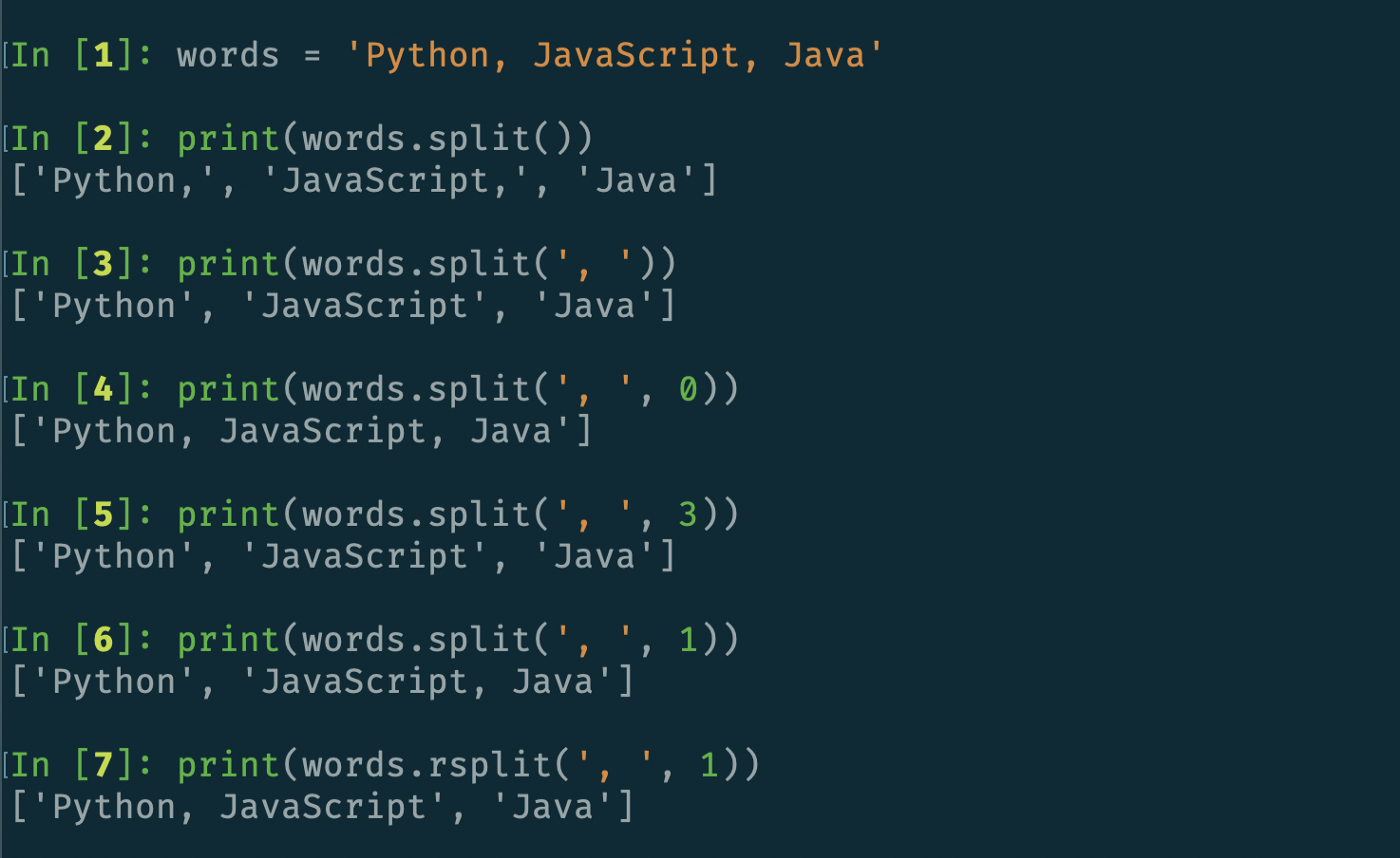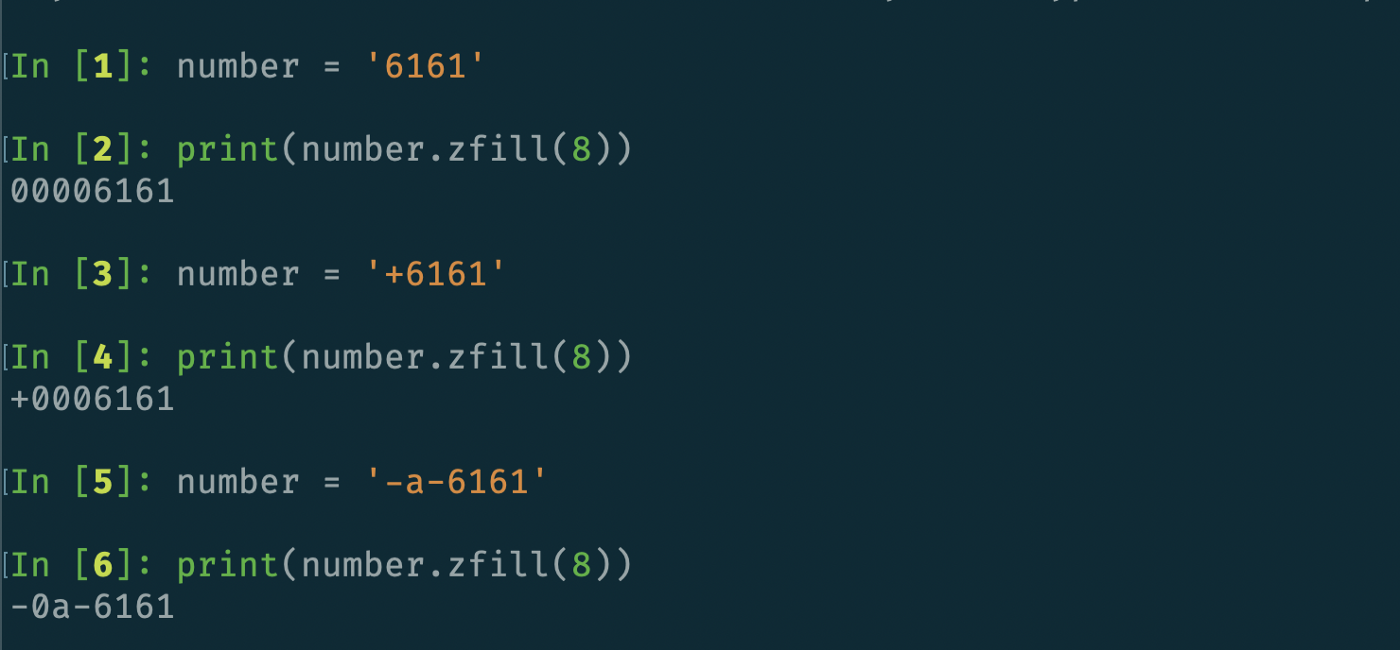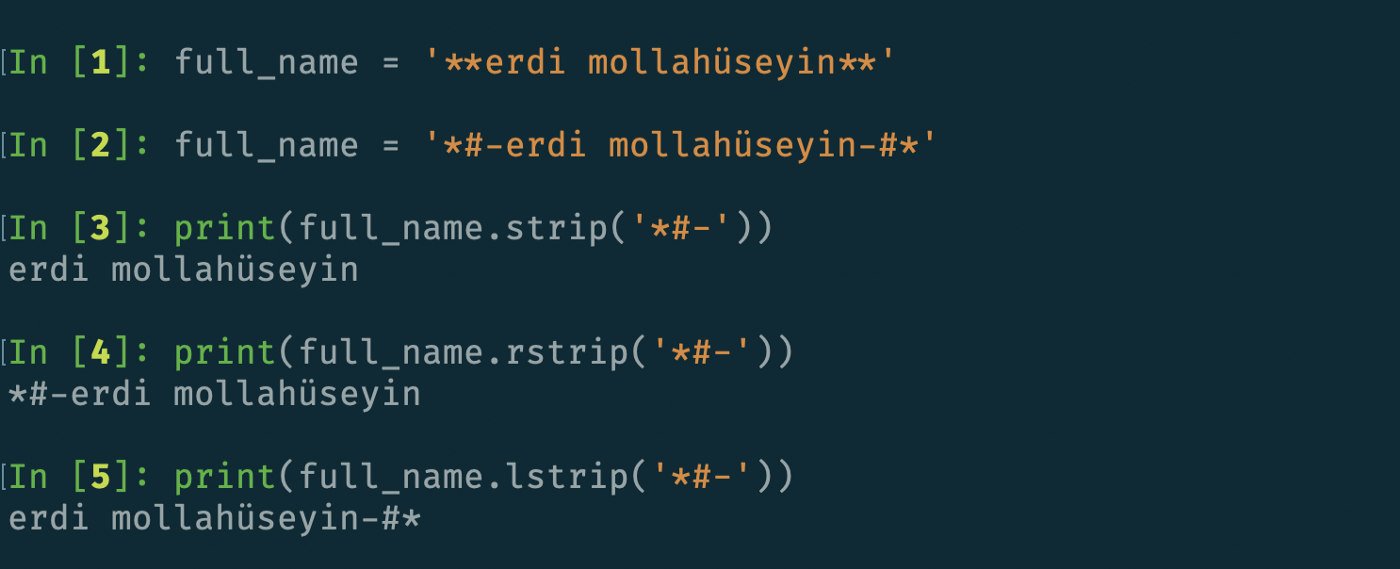Python String Methods

In this article, you will learn how to use some built-in methods for Python. Strings in python are surrounded by either single or double quotation marks and each character in a string is assigned an index.
Section Overview
- count()
- center()
- swapcase()
- find()
- split()
- startswith()
- endswith()
- ljust() and rjust()
- string capitalization
- zfill()
- strip()
Let’s look at string methods:
Section 1. count()
The count() method returns the number of occurrences of a substring in the given string.
Syntax:
string.count(substring, start, end)
Parameters:
- substring (Required) is the string whose count is to be found.
- start (Optional) is the starting index for the string.
- end (Optional) is the ending index for the string.
Let’s look at the example without optional parameters:

Let’s look at the example using optional parameters:

Section 2. center()
The center() method creates and returns a new string. Whitespace is the default.
Syntax:
string.center(length, fillchar)
Parameters:
- length (Required) is the length of the string.
- fillchar (Optional) is the character which needs to be padded.
Let’s look at the example without optional parameters:

Let’s look at the example using optional parameters:

Section 3. swapcase()
The swapcase() method converts all uppercase characters to lowercase or all lowercase characters to uppercase.
Syntax:
string.swapcase()
Let’s look at the example:

Section 4. find()
The find() method returns the lowest index in the string where substring sub is found within the slice s[start:end].
Syntax:
string.find(substring, start, end)
Parameters:
- substring (Required) which is to be searched in the given string.
- start (Optional) is the starting position where substring is to be checked within the string.
- end (Optional) is the ending position where substring is to be checked within the string.
Let’s look at the example without optional parameters:

Let’s look at the example using optional parameters:

Section 5. split()
The split() method returns a list of strings in a string for breaking the given string by the specified separator. Also, default separator is any whitespace.
Syntax:
string.split(separator, maxsplit)
Parameters:
- separator (Optional) is delimiter. The string splits at this specified separator. Default separator is any whitespace.
- maxsplit (Optional) is a number of splits. If it is not used than there is not limit.
Note: You can use rsplit() for splits a string from the right.
Let’s look at the example:

Section 6. startswith()
The startswith() method return True, if starting with the given specified value in a string. Otherwise, it return False.
Syntax:
string.startswith(search_string, start, end)
Parameters:
- search_string (Required) is the string to be searched.
- start (Optional) is the starting position where substring is to be checked within the string.
- end (Optional) is the ending position where substring is to be checked within the string.
Let’s look at the example without optional parameters:

Let’s look at the example using optional parameters:

Section 7. endswith()
The endswith() method return True, if ending with the given specified value in a string. Otherwise, it return False.
Syntax:
string.endwith(search_string, start, end)
Parameters:
- search_string (Required) is the string to be searched.
- start (Optional) is the starting position where substring is to be checked within the string.
- end (Optional) is the ending position where substring is to be checked within the string.
Let’s look at the example without optional parameters:

Let’s look at the example using optional parameters:

Section 8. ljust() and rjust()
The ljust and rjust will left or right align the string, using a specified character (space is default) as the fill character.
Syntax:
string.ljust(s, fillchar)
string.rjust(s, fillchar)
Parameters:
- length (Required) is the width of string to expand it.
- fillchar (Optional) is the character to fill in remaining space.
Let’s look at the example:

Section 9. String Capitalization
Section 9.1. capitalize()
The capitalize() method converts only the first character of a string to capital (uppercase) letter.
Syntax:
string.capitalize()
Let’s look at the example:

Section 9.2. upper()
The upper() method converts all characters of the a string to uppercase letter.
Syntax:
string.upper()
Let’s look at the example:

Section 9.3. title()
The title() method converts all the first character of the a string to uppercase letter.
Syntax:
string.title()
Let’s look at the example:

Section 10. zfill()
The zfill() method returns a copy of the string with 0 characters padded to the leftside of the given string.
Syntax:
string.zfill(length)
Parameters:
- length is the length of the returned string from zfill() with
0digits filled to the leftside.
Let’s look at the example:

Section 11. strip()
The strip() method returns a copy of the string with both leading and trailing characters removed.
- rstrip(): strips characters from the right in a string.
- lstrip(): strips characters from the left in a string.
Syntax:
string.strip(character)
Parameters:
- character (Optional): set of characters to be removed.
Let’s look at the example:

Conclusion
In this article you’ve learned how to use some built-in methods for Python. You can visit Python documentation for learning deeper.